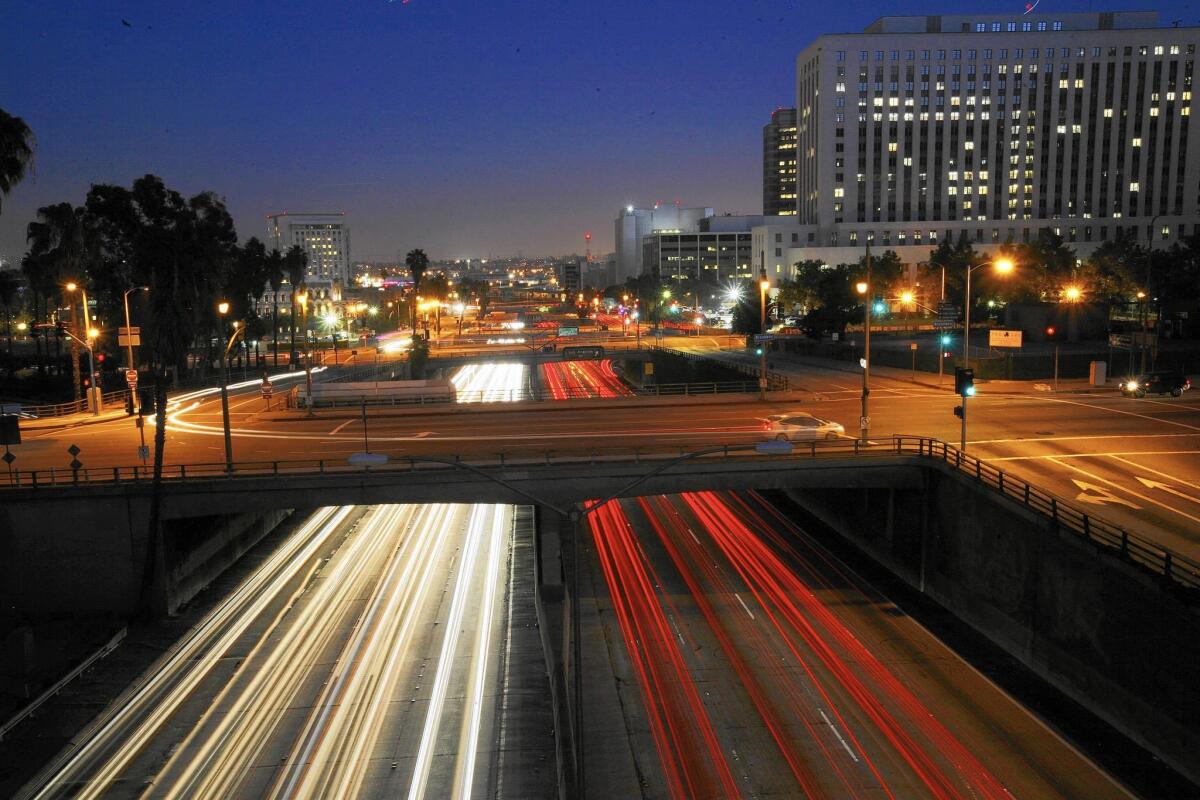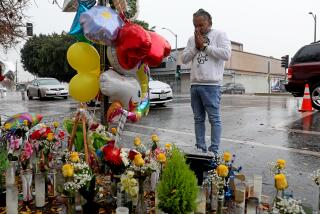‘Capping’ freeways may be a way to provide more open space in L.A.

As cities become more dense, finding new open space is proving a difficult task.
Urban planners in several areas around Southern California believe we don’t need to look any farther than our local freeways. The idea is to “cap” the freeway by building a park above it.
Q: This sounds pretty speculative. Has it been done elsewhere?
A: Yes. There are several capped freeways around the country. La Cañada Flintridge has a small park over a portion of the 210 Freeway. Boston and Dallas built grand parks on top of freeways in their downtown areas. St. Louis is building one near the Gateway Arch.
Q: Where would these L.A. parks go?
A: The environmental review process began earlier this year on a plan to cover a mile-long stretch of the 101 Freeway in Hollywood with a 38-acre park. Meanwhile, supporters of a separate plan to deck a different stretch of the 101 Freeway in downtown L.A. have produced a short video describing the proposal and have posted renderings on their website. A park over yet another part of the 101 Freeway in Ventura has also been discussed.
In Glendale, city staffers have asked for input on a project that would put a park over part of the 134 Freeway. L.A. County planners have also floated the idea of a lid over the 60 Freeway that could stitch together parts of Belvedere Park in unincorporated East Los Angeles. Farther west, Santa Monica’s 2010 land use plan demands that officials “pursue capping sections of the I-10 Freeway …” The plan targets two separate areas of the city to study for covering: one in the Memorial Park area and one downtown.
Q: What’s the thinking behind them?
Advocates for freeway caps describe the roadways as “scars” that have divided communities and created eyesores. The 10 Freeway, for example, isolates Santa Monica’s Pico neighborhood from the central part of the city. Closer to the ocean, it separates the civic center from shopping areas such as the Third Street Promenade and Santa Monica Place. The plan for downtown Los Angeles decking would bridge a similar gap between the so-called civic core — where City Hall is — and the cultural core, which boasts Union Station and Chinatown.
Santa Monica’s planning director, David Martin, said freeway capping is “certainly something we are interested in pursuing,” but added that no grant funding or other catalyst “has come along to date that has the city closer to actually doing it.”
Since most residents are in favor of more open space, and the interstate is actually below grade as it goes through downtown, Martin said covering could provide a seemingly “obvious solution” in Santa Monica. But logistically, he said, there are “all kinds of challenges that have to be overcome for this to happen.”
Q: How expensive would this be?
Feasibility studies have estimated the cost of the capping proposals in Hollywood and downtown L.A. in the hundreds of millions. Then there are the motorists to consider.
“How do you build something like that? It’s very expensive and it’s a challenge to build a cap on a freeway that has thousands of cars a day going through it,” Martin said. “I don’t think you can really close the 10 for two years to build a park.”
Martin said he’s been tracking the proposed capping over the Hollywood Freeway. “It’d be great if they could pull it off and sort of show us how it’s done,” he said.
Twitter: @MattStevensLAT
More to Read
Start your day right
Sign up for Essential California for news, features and recommendations from the L.A. Times and beyond in your inbox six days a week.
You may occasionally receive promotional content from the Los Angeles Times.






